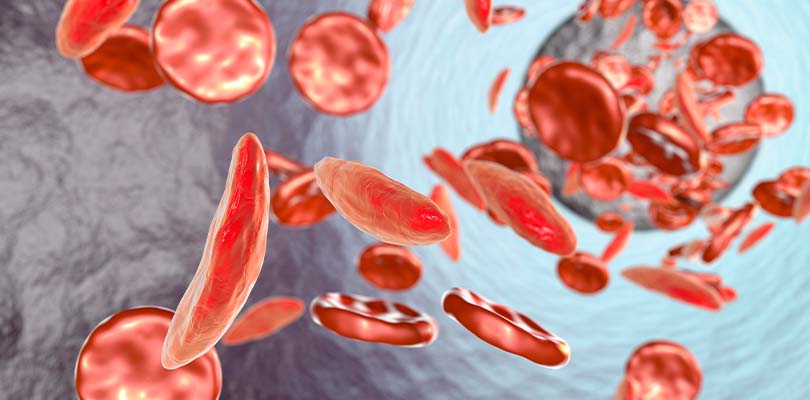Photo Credit: Remains / istockphoto.com
Asthma and Anxiety
It seems that wherever asthma goes, anxiety is likely to follow. Asthma is the object, and anxiety is the shadow. Asthma is the earthquake, and anxiety is the aftershock. Actually, neither of these metaphors are accurate because they imply that anxiety isn’t as problematic, scary or destructive as asthma – and as anyone with anxiety can tell you, this is not true.
Maybe a better analogy would be to say that asthma is like a wildfire burning across a drought-ridden forest. At the wrong place and the wrong time, the asthma wildfire sparks a separate but equally dangerous series of explosions when it burns through an industrial park.
What started as one big problem became two massive problems. It’s your job to act as the fire department and put this fire out – fast.
Proving the Link
Looking at the numbers is always a useful method to get a solid base of information. With this information you can draw new conclusions. When it comes to the link between asthma and anxiety, there have been a large number of studies done. To begin, asthma is the most common childhood illness effecting as much as 10% of the childhood population. Even though the prevalence dips into adulthood, about 5% of adults have the condition. Looking at the sheer numbers, this condition influences millions of people every day.
For anxiety, the rate of generalized anxiety disorder (GAD) is about 3% of the population in the US, and panic disorder is about the same at between 2% and 3%. This news isn’t shocking, but something happens when you begin to look at people that have both asthma and anxiety. Results have been found reporting that 24% of people with asthma will also have an anxiety disorder like GAD or panic disorder. That means that about one out of every four people with asthma will have anxiety.
This result may shock you, but being shocked will not help. What will help is gaining a firm understanding of why the link exists and then finding ways to break the link through changing physical health and mental health intervention. With luck, and some hard work, you can be living a better life with less asthma and less anxiety.
Explaining the Link
There are many possible explanations for the relationship between asthma and anxiety. One such justification is the startling overlap of symptoms between the two. The similar symptoms include many physical symptoms like tightness in chest, shortness of breath, wheezing, hyperventilation, dizziness and sweating.
Because so many physical symptoms overlap, the associations between the two become stronger. People are no longer able to tell where asthma ends and anxiety begins, so they both worsen.
Another explanation suggests that medications meant to help with asthma symptoms, such as methylxanthines, beta-agonists and corticosterioids, can do harm along with the help. Many people who actively take these medications report increased symptoms of anxiety with regular use. Be sure to check with your doctor about connections between prescribed medications and your anxiety.
Break the Link
Over time, anxiety becomes paired with asthma due to the symptom overlap described earlier. When asthma symptoms begin, anxiety symptoms are close behind. This relationship is more common early in the relationship. Unfortunately, the relationship between stress and asthma becomes distorted and changed over time.
The anxiety begins to branch off and move away from asthma attacks. When symptoms are not present, you find yourself worrying about the next attack, how bad it’s going to be and what you can do to avoid it. Your increased stress has you convinced that this planning helps when, in actuality, it raises your overall anxiety. Increased anxiety feeds into increased asthma risk.
The process of the attack and the time between attacks becomes a cyclical pattern where the same thoughts, feelings and behaviors take place. Beginning at the event of the attack, you first notice symptoms of shortness of breath, tightness in your chest, coughing and wheezing. These symptoms set everything in motion.
While asthma and anemia are two different health conditions, there may be a link. From symptoms to treatments, learn more here.
From there, your mind begins to interpret what your body is telling you. The way your mind interprets your symptoms will dictate the outcome. When you perceive the situation as a typical asthma attack, you will feel only discomfort. Your mind and body can manage discomfort well, and you will move through the symptoms more quickly. When you perceive the situation as dangerous, your mind will react with panicked thinking. Your body will react with tension, rigidity, as you are more likely to hold your breath.
This misinterpretation of symptoms leads to a more undesirable attack. It could be asthma, anxiety or a combination of the two. Attacks can last anywhere from a few seconds up to 30 minutes. If you feel like you are having a panic or asthma attack that lasts longer than half an hour, consult with your treatment team since this is very uncommon.
After the attack concludes, you feel relief and comforted. You know that all attacks end, but in the moment, it is harder to remember. You will feel a mix of liberation, gratitude and appreciation, but these feelings will be short-lived because the cycle concludes with anticipation.
In anticipation, your mind begins to consider the next attack. Where will it be? When will it be? Who will be there to help you? How bad will it be? It is this anticipation that sets the stage for the next anxiety attack. The anticipation triggers more anxiety. This anxiety starts the next cycle.
Attack the Physical
Before you can set out to change the mental facets of the attack cycle, you will be well-served to treat your physical symptoms of asthma to the best of your ability. If you can do so effectively, you can limit the physical sources of your attacks. Fewer physical symptoms means fewer attacks.
Treating the physical is a simple three-step process:
- Monitor yourself and your symptoms more regularly. Be aware of days, times, activities and locations that seem to set off symptoms. By noticing trends, you become better able to prevent unwanted symptoms.
- Follow recommendations from your treatment team. Your doctor is looking out for you. Following his or her recommendations is a must to improve your asthma, and doing so with a high level of consistency is your best bet.
- Build an asthma action plan. The American Lung Association has a fantastic resource to monitor, track and respond to increasing symptoms. Completing the plan reduces worry. Rather than asking yourself endless “what ifs,” you can simply refer to the action plan. Produce multiple copies of the plan and keep duplicates in places where symptoms are likely to strike. Share the information with your loved ones.
Attack the Mental
When your physical symptoms are under control, you can divert more attention and energy towards the mental contributors. Like with the physical, step one is to monitor yourself by looking at your thoughts, feelings and behaviors. Do attacks spark when you are feeling lonely or when you are stuck in your own head for too long? Practice patience with yourself as self-monitoring is a challenging skill to learn.
With your new data gathered from monitoring, you can create a plan of action to reduce the anxiety. Thought stopping, prescribed worry, autogenic training, deep breathing, progressive muscle relaxation and guided imagery are just a few techniques you can research to improve your anxiety.
If the thought of reducing stress, worry and anxiety seems too overwhelming, you might be better served to consult with a therapist. A therapist can use the information gathered through self-monitoring and tailor techniques for your specific symptoms.
Whatever course of action you decide, stay with it. Consistency is the only way to know if your action is effective. Once you find the best interventions for you and maintain your consistency, you can end the cycle of asthma and anxiety. A broken wheel will not spin, and you can finally get the independence from attacks that you have wanted so badly.







